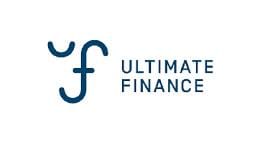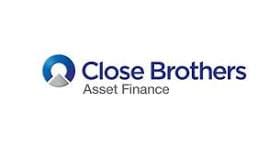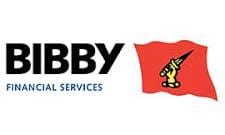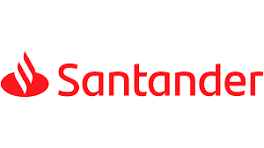What is Invoice Discounting?
Invoice discounting is a type of invoice finance that helps businesses improve cash flow by unlocking the value of their outstanding customer invoices. It is a funding solution where a business gets a cash advance against its unpaid invoices rather than waiting for its customers to pay on their credit terms, which can be weeks or even months.
The core of invoice discounting is confidentiality. With this type of finance, the business retains full control of its sales ledger and is responsible for collecting payments from customers. The customers are not made aware that a third-party finance provider is involved in the funding process and this makes it an attractive option for businesses that want to maintain their direct relationships with clients and keep their funding arrangements private.
The process involves a business sharing a copy of its invoices to a finance provider as they are issued. The provider will then advance a percentage of the invoice value, often up to around 90%, to the business. The business continues to manage its credit control and when the customer pays the invoice, they send the full amount to the business as they normally would. The business then repays the advance to the invoice finance provider along with any agreed fees and interest.
How Invoice Discounting Works
Invoice discounting is designed to be a flexible and scalable funding solution. It’s particularly well suited to businesses with internal credit control systems and experienced in managing their customer payments.
When a business enters into an invoice discounting agreement, it sets up a facility with a finance provider. There are two main types of agreements: whole turnover discounting and selective discounting. Whole turnover discounting involves a business selling all or a large number of its eligible invoices providing a continuous line of credit that grows with sales. Selective discounting on the other hand, allows a business to choose specific invoices to receive an advance against, offering a more bespoke approach for short-term cash needs.
Once the facility is in place, the business shares its invoices to the provider. The provider advances the agreed percentage of the invoice amount and the funds are most likely available within 24 to 48 hours. Throughout this process the business maintains its usual communication with customers ensuring the client relationship remains unchanged. Once the customer pays the invoice in full the money is repaid into an account controlled by the finance provider, but in the name of the business. This maintains confidentiality while also providing security for the provider. The remaining balance, minus fees, is then released to the business. This method of invoice funding is often a lower cost option than other forms of invoice finance because the business retains the management payment collections.
Invoice Discounting vs Other Finance Options
It is important to understand how invoice discounting fits into the broader context of business funding. It is a key part of invoice finance, but it differs from other solutions, most notably invoice factoring.
Invoice Factoring
Invoice factoring is a funding option where the business sells its invoices to a finance provider who then takes on the entire credit control process. The provider handles all communication and payment collection from the business’s customers. This means the customers are aware that a third party is involved. Factoring is often a suitable choice for businesses that want to outsource their collections to save time or resources, while discounting is for those who prefer to keep control of that process. Factoring can also be more accessible for smaller less established businesses that may not have the strong internal systems required for discounting.
Traditional Business Loans and Other Funding
Invoice discounting is different from a traditional business loan or overdraft. Unlike a fixed-term loan which provides a lump sum and is repaid over a set period, invoice finance and invoice discounting is a funding facility that grows in line with a business’s turnover. This makes it a flexible and scalable solution for managing working capital. It’s an alternative way of securing finance that uses a business’s assets (its invoices) rather than requiring a full loan eligibility profile or another form of collateral. Some larger businesses also use Asset Based Lending (ABL), which can combine invoice discounting with funding secured against other assets like property or machinery.
Ultimately, the choice of finance depends on a business’s specific needs including its size, turnover and the importance of maintaining confidential customer relationships. Invoice discounting is particularly effective for those who want fast, flexible access to cash while retaining control over their operations and client base.
Invoice Discounting FAQs
Is invoice discounting a loan?
Invoice discounting is a form of short-term financing where a business gets an advance against the value of its invoices. While it involves borrowing money, it differs from a traditional loan as the amount of funding available is directly tied to the value of a business’s sales ledger. It is not new debt but rather an advance on money that the business has already earned.
Is invoice discounting confidential?
Yes, invoice discounting is a confidential service. The business remains responsible for its credit control and payment collections, meaning customers continue to deal directly with the business. The customers are not made aware of the funding arrangement with a third-party provider allowing the business to maintain its customer relationships end to end..
What types of businesses typically use invoice discounting?
Invoice discounting is a suitable option for a wide range of businesses, particularly those that have a good internal credit control team. It’s often used by businesses with a consistent turnover who sell goods or services to other businesses on credit terms. Some providers may have minimum turnover requirements, but there are options available for businesses of various sizes.
What happens if a customer doesn’t pay an invoice?
If a customer fails to pay an invoice the business may be responsible for repaying the cash advance to the provider and this is known as a recourse agreement. Some providers do offer “bad debt protection” for an additional fee which can protect a business from losses if a customer becomes insolvent. It is a point to clarify when setting up the agreement.
How much does invoice discounting cost?
The cost of invoice discounting typically includes a service fee and an interest charge on the money advanced. Because the business handles its own credit control, the fees for invoice discounting are often lower than for invoice factoring. The final cost will depend on a number of factors including the business’s turnover and the value of the invoices, so it is important to get a clear breakdown of all charges from a provider.





